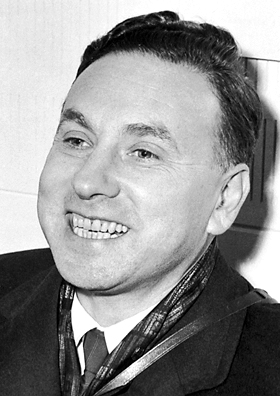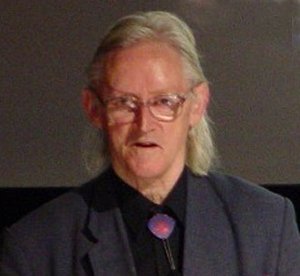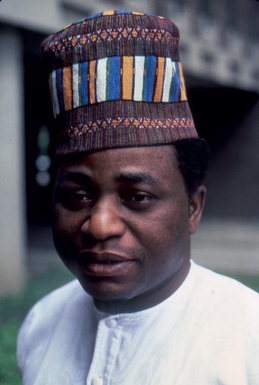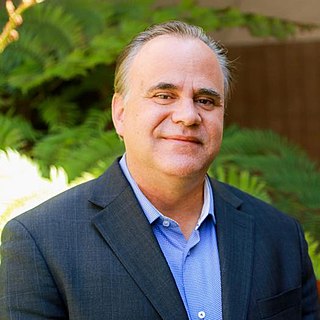Georges Zissis (born 1964) is a Greek physicist.
Georges Zissis (born 1964) is a Greek physicist.
Zissis was born in Athens in 1964 and by 1986 had graduated from the University of Crete in general Physics. He obtained master's and Ph.D. degrees on Plasma Physics from the University of Toulouse III - Paul Sabatier in 1987 and 1990 respectively and then became a full professor there; in 2011 he awarded the "Professor Honoris Causa" honorary degree from Physics Department of Saint Petersburg State University. In December 2006 he won the 1st Award of the Centenary Challenge of the International Electrotechnical Commission and in 2009 became a recipient of the Energy Globe Award and Fresnel Medal from the French Illuminating Engineering Society. His primary area of work is in the field of Light Sources Science and Technology. He is especially interested in the physics of electrical discharges used as light sources; system and metrology issues for solid-state lighting systems; normalization and quality issues for light sources; impact of lighting to energy, environment, quality of life, health and security; interaction between light source and associated power supply; illumination and lighting. [1]

Robert Hofstadter was an American physicist. He was the joint winner of the 1961 Nobel Prize in Physics "for his pioneering studies of electron scattering in atomic nuclei and for his consequent discoveries concerning the structure of nucleons".

Frederick Reines was an American physicist. He was awarded the 1995 Nobel Prize in Physics for his co-detection of the neutrino with Clyde Cowan in the neutrino experiment. He may be the only scientist in history "so intimately associated with the discovery of an elementary particle and the subsequent thorough investigation of its fundamental properties."

Burton Richter was an American physicist. He led the Stanford Linear Accelerator Center (SLAC) team which co-discovered the J/ψ meson in 1974, alongside the Brookhaven National Laboratory (BNL) team led by Samuel Ting for which they won Nobel Prize for Physics in 1976. This discovery was part of the November Revolution of particle physics. He was the SLAC director from 1984 to 1999.

James Watson Cronin was an American particle physicist.

Val Logsdon Fitch was an American nuclear physicist who, with co-researcher James Cronin, was awarded the 1980 Nobel Prize in Physics for a 1964 experiment using the Alternating Gradient Synchrotron at Brookhaven National Laboratory that proved that certain subatomic reactions do not adhere to fundamental symmetry principles. Specifically, they proved, by examining the decay of K-mesons, that a reaction run in reverse does not retrace the path of the original reaction, which showed that the reactions of subatomic particles are not indifferent to time. Thus the phenomenon of CP violation was discovered. This demolished the faith that physicists had that natural laws were governed by symmetry.

Nick Holonyak Jr. was an American engineer and educator. He is noted particularly for his 1962 invention and first demonstration of a semiconductor laser diode that emitted visible light. This device was the forerunner of the first generation of commercial light-emitting diodes (LEDs). He was then working at a General Electric Company research laboratory near Syracuse, New York. He left General Electric in 1963 and returned to his alma mater, the University of Illinois at Urbana-Champaign, where he later became John Bardeen Endowed Chair in Electrical and Computer Engineering and Physics.

Shuji Nakamura is a Japanese-born American electronic engineer and inventor specializing in the field of semiconductor technology, professor at the Materials Department of the College of Engineering, University of California, Santa Barbara (UCSB), and is regarded as the inventor of the blue LED, a major breakthrough in lighting technology.

Roy Jay Glauber was an American theoretical physicist. He was the Mallinckrodt Professor of Physics at Harvard University and Adjunct Professor of Optical Sciences at the University of Arizona. Born in New York City, he was awarded one half of the 2005 Nobel Prize in Physics "for his contribution to the quantum theory of optical coherence", with the other half shared by John L. Hall and Theodor W. Hänsch. In this work, published in 1963, he created a model for photodetection and explained the fundamental characteristics of different types of light, such as laser light and light from light bulbs. His theories are widely used in the field of quantum optics. In statistical physics he pioneered the study of the dynamics of first-order phase transitions, since he first defined and investigated the stochastic dynamics of an Ising model in a largely influential paper published in 1963. He served on the National Advisory Board of the Center for Arms Control and Non-Proliferation, the research arms of Council for a Livable World.

John Cromwell Mather is an American astrophysicist, cosmologist and Nobel Prize in Physics laureate for his work on the Cosmic Background Explorer Satellite (COBE) with George Smoot.

Steven Chu is an American physicist and former government official. He is a Nobel laureate and was the 12th United States Secretary of Energy. He is currently the William R. Kenan Jr. Professor of Physics and Professor of Molecular and Cellular Physiology at Stanford University. He is known for his research at the University of California, Berkeley, and his research at Bell Laboratories and Stanford University regarding the cooling and trapping of atoms with laser light, for which he shared the 1997 Nobel Prize in Physics with Claude Cohen-Tannoudji and William Daniel Phillips.

Isamu Akasaki was a Japanese engineer and physicist, specializing in the field of semiconductor technology and Nobel Prize laureate, best known for inventing the bright gallium nitride (GaN) p-n junction blue LED in 1989 and subsequently the high-brightness GaN blue LED as well.

An LED lamp or LED light bulb is an electric light that produces light using light-emitting diodes (LEDs). LED lamps are significantly more energy-efficient than equivalent incandescent lamps and can be significantly more than most fluorescent lamps. The most efficient commercially available LED lamps have efficiencies of 200 lumen per watt (Lm/W). Commercial LED lamps have a lifespan many times longer than incandescent lamps.

Nicholas (Nick) John Phillips was an English physicist, notable for the development of photochemical processing techniques for the colour hologram. Holograms typically used to have low signal-to-noise ratios, and Phillips is credited as the pioneer of silver halide holographic processing techniques for producing high-quality reflection holograms.

Samuel Ejikeme Okoye was a Nigerian astrophysicist from Amawbia in Anambra State, Nigeria. Okoye was the first black African to obtain a doctorate degree in Radio Astronomy.
M. George Craford is an American electrical engineer known for his work in Light Emitting Diodes (LEDs).
Robert Harry Socolow is an American theoretical physicist and professor emeritus of Mechanical and Aerospace Engineering at Princeton University.

George Thomas Reynolds was an American physicist best known for his accomplishments in particle physics, biophysics and environmental science.

Steven P. DenBaars is an American material scientist, electrical engineer, and academic. He is a Professor of Materials and Electrical and Computer Engineering, and the Executive Director of the Solid State Lighting and Energy Electronics Center at the University of California, Santa Barbara. He is also a Fellow of National Academy of Inventors (NAI), and was selected as a Member of National Academy of Engineering (NAE) in 2012 for contributions to gallium nitride-based materials and devices for solid state lighting and displays.
Valery A. Godyak is a Russian-American physicist who specializes in plasma physics. As a scientist, he made fundamental contributions to the understanding of radio frequency (RF) induced discharges in plasmas as well as in associated nonlinear phenomena. As an industrial physicist, he developed induction lamps such as the Icetron-Endura RF lamp and received honors from companies such as Osram Sylvania and Siemens.
John Edward Allen DEng, DSc, FIEE, FIEEE, FInstP is a British engineer and plasma physicist. In particular, he has directly contributed to international dusty plasma experiments in space under microgravity conditions.